Portulaca oleracea, Common Purslane
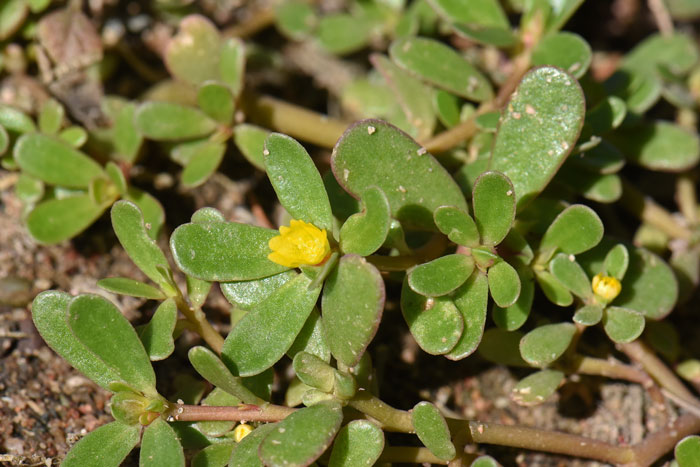
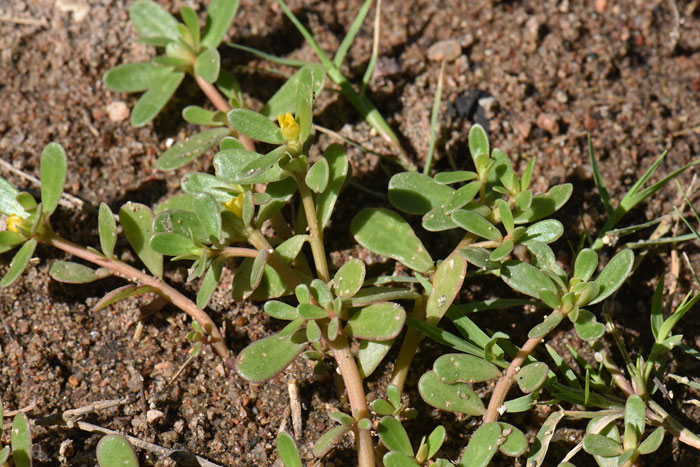
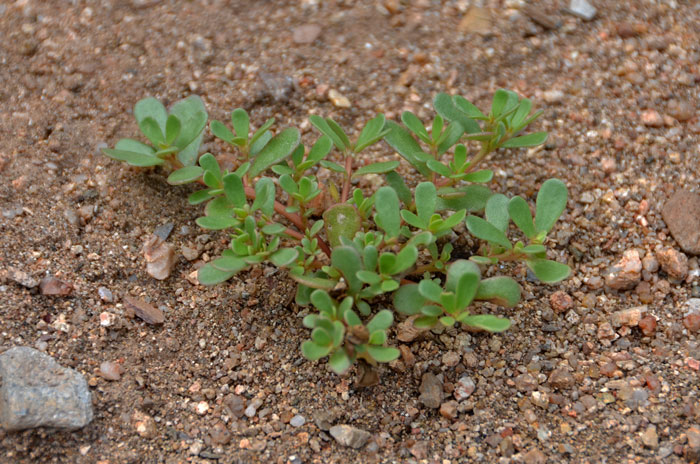
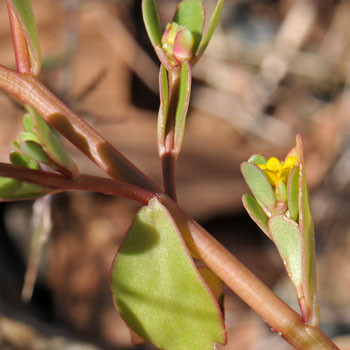
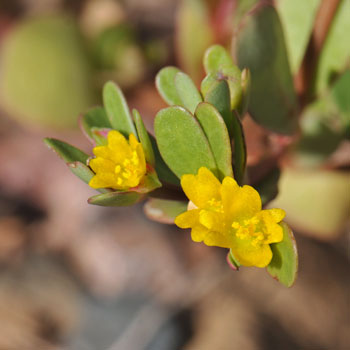
Scientific Name: Portulaca oleracea
Common Name: Common Purslane
Also Called: Akulikuli-kula, Duckweed, Garden Purslane, Little Hogweed, Little-hogweed, Purslane, Pursley, Pusley, Verdolaga, Wild Portulaca (Spanish: Verdolaga)
Family: Portulacaceae, Purslane Family
Synonyms: (Portulaca neglecta, Portulaca oleracea subsp. granulatostellulata, Portulaca oleracea subsp. impolita, Portulaca oleracea subsp. nicaraguensis, Portulaca oleracea subsp. nitida, Portulaca oleracea subsp. papillatostellulata, Portulaca oleracea subsp. stellata; Portulaca oleracea var. oleraceam, Portulaca oleracea var. parvifolia, Portulaca retusa)
Status: Introduced
Duration: Annual
Size: Up to 20 inches more or less.
Growth Form: Forb/herb; stems spreading, glabrous, prostrate, succulent, trichomes at stem nodes.
Leaves: Green; up to 1 inch, succulent, leaf shape obovate to spathulate and flattened.
Flower Color: Yellow; small, pretty, solitary or clustered in stem tips, 2 to 5 per cluster; 5 to 20 stamens; sepals green or reddish, petals are yellow; fruit a capsule; seeds black or dark brown, flattened.
Flowering Season: August to October; May to September in California.
Elevation: 1,500 to 8,500 feet.
Habitat Preferences: Sometimes in saline soil, disturbed places or waste areas.
Recorded Range: Portulaca oleracea is found throughout all of North and Central America. It is found throughout Arizona above 1,500 feet.
North America & US County Distribution Map for Portulaca oleracea.
U.S. Weed Information: In North America Portulaca oleracea can be weedy or invasive according to the following authoritative sources: STATE, Assorted authors. State noxious weed lists for 46 states; Information index for selected alien plants in Hawaii (20 October 2003); Weeds of Kentucky and adjacent states:; Weeds of the Northeast; Weeds of Nebraska and the Great Plains; Weeds of the West. Plants included here may become weedy or invasive.
Invasive/Noxious Weed Information: In North America Portulaca oleracea is listed as a Noxious Weed by the state of Arizona as a Prohibited noxious weed and Regulated noxious weeds. Plants included here are invasive or noxious.
Wetland Indicator: In North America Portulaca oleracea has the following wetland designations: Arid West, FAC; Atlantic and Gulf Coastal Plain, FACU; Eastern Mountains and Piedmont, FAC; Great Plains, FAC; Midwest, FACU; Northcentral & Northeast, FACU; Western Mountains, Valleys, and Coast, FAC.
FAC = Facultative, occur in wetlands and non-wetlands
FACU = Facultative Upland, usually occur in non-wetlands, but may occur in wetlands.
Threatened/Endangered Information: No information available.
In Arizona and New Mexico there are 5 species of Portulaca, in California there are 3 species, Texas has 6 species, Nevada and Utah have 2 species. All data is approximate and subject to taxonomic changes.
Comments: Portulaca oleracea, any one of the dozen or so common names, is highly variable, winter hardy and one of the most aggressive weeds in the world. Also see in Southwest Desert Flora: Shrubby Purslane, Portulaca suffrutescens.
Portulaca oleracea has been used for of variety of purposes by many North American indigenous peoples.
Acoma Food, Vegetable
Plants cooked with meat and eaten like spinach.
Apache, Chiricahua & Mescalero Food, Unspecified, Eaten without preparation or cooked with green chile and meat or animal bones.
Cherokee Drug, Anthelmintic, Compound decoction taken for worms.
Cherokee Drug, Ear Medicine, Juice used for earache.
Hawaiian Drug, Strengthener, Plant and other plants pounded, squeezed and resulting liquid taken to check run down conditions.
Hopi Food, Unspecified, Plant formerly cut up fine and eaten in gravy.
Iroquois Drug, Antidote, Good medicine to cure you if someone has given you some bad medicine.
See ethno-botanical uses at Native American Ethnobotany, University of Michigan, Dearborn.

